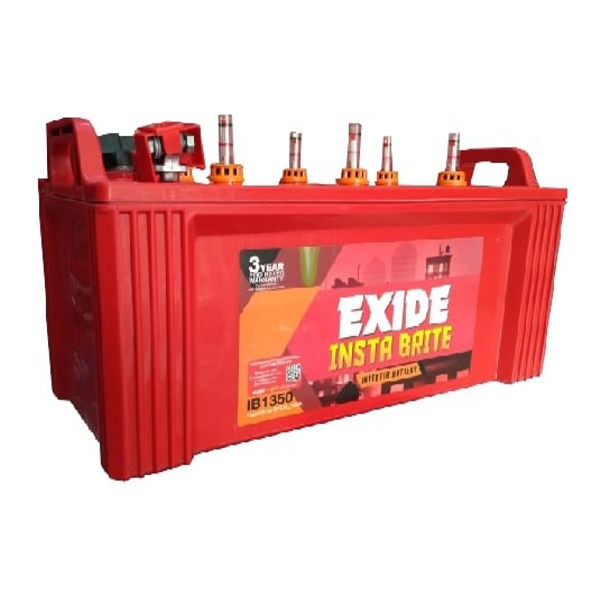Exide Insta Brite is a range of automotive batteries known for providing reliable and high-performance power to vehicles. The Insta Brite series is specially designed to deliver superior cranking power, longer battery life, and low maintenance requirements, making it a popular choice for a wide range of vehicles. Below are the key features and details of Exide Insta Brite batteries: 1. Key Features: High Cranking Power: Provides excellent starting power for engines, even under extreme weather conditions (both hot and cold). Maintenance-Free: Exide Insta Brite batteries are designed to be virtually maintenance-free, reducing the need for constant checks and refills. Durability: Built with robust construction to handle tough environments, ensuring a longer lifespan and reliable performance. Enhanced Safety: These batteries come with advanced safety features, reducing the risk of leakage or damage. Shock and Vibration Resistance: Built to withstand shocks and vibrations that are common in automotive applications. 2. Technology: Lead-Acid Technology: Like most automotive batteries, Exide Insta Brite uses lead-acid technology, which ensures high performance, reliability, and cost-effectiveness. Calcium-Calcium Technology: Some variants of Exide Insta Brite incorporate calcium-calcium technology, which helps in reducing water loss and improving the overall battery performance. Advanced Grid Design: This design improves the efficiency and strength of the battery, enhancing its cranking power and overall battery life. 3. Types of Vehicles: Passenger Cars: Exide Insta Brite is commonly used in standard passenger vehicles like sedans, hatchbacks, and SUVs. Two-Wheelers: Some models are also suitable for motorcycles and scooters. Commercial Vehicles: Some higher-capacity variants are suitable for commercial vehicles, including trucks and buses. 4. Advantages: Longer Life: Designed to provide a longer service life, reducing the frequency of replacements. Excellent Starting Performance: Ensures smooth engine start-ups, especially in cold weather conditions. Cost-Effective: Provides great value by offering a balance of performance, durability, and cost. Environmentally Friendly: Being a lead-acid battery, it is recyclable, making it more eco-friendly than some other types of batteries. 5. Available Sizes/Models: Exide Insta Brite batteries come in different sizes and specifications based on the vehicle’s requirements. These sizes are designed to meet the specific needs of the vehicle, whether it is a compact car or a larger commercial vehicle. 6. Warranty: Exide Insta Brite batteries often come with a manufacturer warranty, typically ranging from 12 months to 36 months depending on the model. The warranty covers manufacturing defects and performance issues, offering peace of mind for the customer. 7. Maintenance: Low Maintenance: While it is a maintenance-free battery, users should still check the battery for any physical damage or signs of wear. Regular Inspections: It's recommended to periodically check the battery's charge level and connections for safety and optimal performance. 8. Application Areas: Automotive: Passenger cars, SUVs, and trucks. Commercial Vehicles: Larger vehicles such as buses and cargo trucks. Motorcycles & Two-Wheelers: Some models are designed for use in motorcycles and scooters. 9. Price Range: The price of Exide Insta Brite batteries typically ranges from INR 3,000 to INR 10,000 or more, depending on the specific model, size, and vehicle type. 10. Availability: Exide Insta Brite batteries are widely available through Exide dealers, automotive battery retailers, and online platforms in various regions. 11. Popular Models in the Insta Brite Series: Exide Insta Brite IB 100: Known for high starting power, suitable for a range of vehicles. Exide Insta Brite IB 120: Offers more power for larger vehicles. Exide Insta Brite IB 150: Ideal for commercial vehicles, providing reliable performance under heavy load conditions.
Send Message







